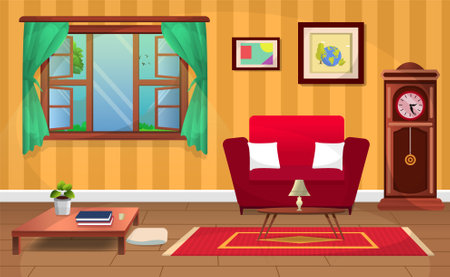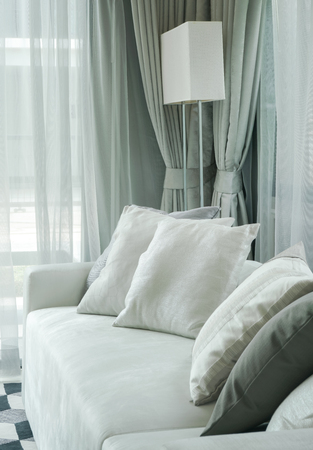Embracing Period Features
One of the most distinctive aspects of traditional English cottage style is the celebration of period features. To truly evoke that coveted cosy cottage vibe in your living room, start by highlighting the architectural details that make these spaces so charming. Exposed beams, whether original or thoughtfully added, instantly ground the room with a sense of rustic history. If your living room boasts a fireplace—especially one with an aged mantelpiece or stone surround—make it the natural focal point of your layout. Arrange your seating to frame and draw attention to this inviting centrepiece, creating a space where people naturally want to gather. Sash windows, another hallmark of British heritage homes, can be accentuated with delicate curtains or wooden shutters. Keep window dressings light and classic to allow maximum daylight while showcasing the elegant proportions of the frames. By thoughtfully arranging furniture and accessories to celebrate these period details, you’ll not only preserve their character but also create an authentic foundation for your cottage-inspired living room.
Classic English Colour Palettes
When it comes to capturing the essence of cosy cottage living, your choice of colours plays a pivotal role. Traditional English cottages draw inspiration from the natural landscapes that surround them, resulting in palettes that feel both welcoming and enduring. To achieve this look in your living room, opt for hues that evoke warmth and timeless sophistication while maintaining a sense of comfort.
Time-Honoured Hues Inspired by the Countryside
The classic English palette often features soft, muted tones rather than bold or overly bright shades. Think about gentle creams, sage greens, dusty blues, and warm taupes—colours that reflect the rolling hills, meadows, and stonework found across rural Britain. These shades create an inviting backdrop, allowing you to layer in bolder accents or vintage patterns without overwhelming the space.
Balancing Warmth and Elegance
To strike the right balance between warmth and elegance, its essential to blend deeper heritage colours with lighter neutrals. This approach prevents the room from feeling too dark while providing visual interest. For example, pair a rich forest green feature wall with off-white woodwork, or combine a deep burgundy sofa with pale linen cushions.
Traditional Cottage Colour Combinations
| Base Colour | Accent Colour | Description |
|---|---|---|
| Creamy White | Sage Green | A fresh yet classic pairing reminiscent of garden foliage against cottage walls. |
| Dove Grey | Dusky Pink | Softens spaces with a hint of romance while keeping things understated. |
| Stone Taupe | Navy Blue | Adds depth and a nautical touch perfect for rural or coastal settings. |
| Pale Blue | Mustard Yellow | Brings countryside cheeriness balanced by serene undertones. |
When selecting your palette, always test paint swatches at different times of day, as English weather and light can dramatically alter how colours appear. Ultimately, prioritise tones that make you feel at home while echoing the timeless charm found in traditional British cottages. This careful curation will set the perfect foundation for arranging a living room full of character and warmth.

3. Furniture Arrangement for Intimacy
Creating that quintessential English cottage charm is as much about how you arrange your furniture as it is about the pieces themselves. To foster intimacy and encourage conversation, start by positioning sofas and armchairs to face each other or form a gentle semi-circle around a central focal point, such as a fireplace or coffee table. This layout not only maximises interaction but also reinforces the snug, welcoming atmosphere so characteristic of traditional cottage living rooms.
Opt for compact, upholstered furniture with soft curves and classic fabric patterns—think florals, checks, or understated stripes—to evoke an authentic English sensibility. Place side tables within easy reach of each seat; these are not just practical for your cup of tea or reading glasses but also enhance the sense of personal space. Avoid pushing all seating against the walls—pulling pieces towards the centre subtly shrinks the room, making it feel warmer and more inviting.
Layering in footstools, pouffes, or even a window seat adds both comfort and visual interest. Don’t forget to include a few well-chosen lamps on side tables or in corners to provide soft pools of light in the evening, further enhancing that intimate, lived-in feel. Ultimately, your goal should be to create natural nooks that invite family and friends to linger, chat, and relax—a true hallmark of English cottage living.
4. Mixing Textures and Patterns
One of the hallmarks of a traditional English cottage living room is the thoughtful layering of textures and patterns. This approach creates an inviting atmosphere, full of depth and visual interest, without tipping over into clutter. The key is to select fabrics and motifs that harmonise rather than compete, embracing both comfort and heritage.
Classic Fabrics for English Charm
The use of tactile materials like tweed, velvet, and linen brings warmth and a sense of authenticity to your space. Each fabric offers its own unique qualities—tweed introduces subtle texture with a nod to the countryside, while velvet adds a luxurious softness often found in period homes. Linen provides balance with its relaxed feel, perfect for soft furnishings such as cushions or curtains.
Pattern Pairing: Florals and Plaids
Patterns are essential for achieving that quintessential cottage look. Florals evoke the English garden, bringing gentle colour and movement into the room. Plaids (or tartans) offer a timeless geometric counterpoint that feels both rustic and refined. When used together, these patterns should be chosen in complementary colour palettes to prevent visual chaos.
Suggested Fabric & Pattern Combinations
| Fabric | Pattern | Best Use |
|---|---|---|
| Tweed | Plaid | Armchairs, scatter cushions |
| Velvet | Solid or Small Floral | Sofas, ottomans |
| Linen | Subtle Stripe or Botanical Print | Curtains, throws |
| Cotton Blend | Larger Floral | Cushion covers, footstools |
Avoiding Clutter with Thoughtful Choices
To keep the look cohesive rather than crowded, limit yourself to two or three main patterns throughout the space. Vary their scale—pair large florals with smaller checks or stripes—and repeat certain colours across different textiles to tie everything together. By balancing textures and patterns thoughtfully, you can capture the essence of cosy cottage living while maintaining a sense of order and calm.
5. Accessorising with British Touches
Adding the finishing touches to your living room is where the true spirit of English cottage charm comes alive. Carefully chosen accessories can evoke a sense of heritage and nostalgia, transforming a simple space into a warm, characterful haven. Curate your decorative elements with intention, focusing on pieces that celebrate traditional British aesthetics.
Vintage Tea Sets
Nothing captures the essence of British hospitality quite like a classic tea set. Displaying vintage porcelain teapots, cups, and saucers—perhaps inherited or sourced from local antique shops—instantly introduces a touch of refinement. Arrange these sets on an open shelf or within a glass-fronted cabinet for easy access during afternoon tea or simply as a beautiful focal point.
Floral Arrangements
Floral motifs are synonymous with English interiors. Incorporate fresh blooms in rustic pitchers or classic vases; think garden roses, lavender, or even wildflowers gathered from the countryside. If fresh flowers aren’t practical, opt for high-quality faux arrangements or dried bouquets for year-round cottage charm.
Framed Countryside Prints
Adorn your walls with framed prints featuring idyllic rural landscapes, quaint villages, or botanical illustrations. These artworks not only bring visual interest but also connect your home to England’s pastoral heritage. Group smaller prints together in a gallery wall style, mixing sizes and frame finishes for an authentic collected-over-time look.
Layering Textures and Patterns
To further enrich the space, introduce soft wool throws, needlepoint cushions, and embroidered linens in classic British patterns such as tartan, floral chintz, or ticking stripe. These layered textiles create warmth and invite relaxation—a hallmark of any cosy cottage living room.
A Gentle Nod to Tradition
By mindfully selecting accessories that tell a story—whether it’s a cherished family heirloom or a delightful market find—you infuse your living room with personal meaning and unmistakable British charm. It’s these thoughtful details that complete the inviting atmosphere of a truly traditional English cottage retreat.
6. Lighting for Ambience
Creating a warm and inviting atmosphere is central to achieving the traditional English cottage look in your living room. Instead of relying solely on overhead lighting, embrace a layered approach using a mix of table lamps, wall sconces, and candles. Table lamps placed on side tables or dressers introduce pools of soft light, perfect for curling up with a good book or enjoying tea with friends. Opt for lamps with ceramic or vintage-inspired bases and fabric shades to add character and charm.
Wall sconces are another quintessentially British touch, providing gentle illumination while saving surface space. Choose fixtures in aged brass or wrought iron finishes to reinforce that authentic cottage feel. Place them thoughtfully—perhaps flanking a fireplace or highlighting artwork—to create pockets of warmth throughout the room.
No English cottage is complete without the flicker of candlelight. Cluster pillar candles on mantels, coffee tables, or window sills in hurricane lanterns or glass holders for safety. The natural glow not only adds ambience but also evokes nostalgia for simpler times spent by the hearth.
By combining these different sources of light, you’ll achieve the gentle, welcoming radiance that defines a true English country cottage. Remember, it’s all about comfort and creating an environment where you—and your guests—immediately feel at home.


